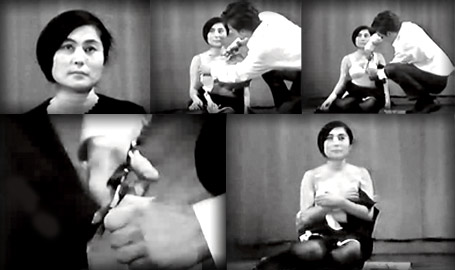The Fluxus Movement
Fluxus, coined by artist George Maciunas, emerged in the 1960s as a response to the rigid constraints imposed by societal norms and traditional artistic conventions. With a desire to break free from the confines of a commercialized art world opting for an approach that placed emphasis on spontaneity, simplicity, accessibility while actively encouraged audience engagement.
In true rebel fashion, Fluxus had no formal established rules. However, the artists associated with Fluxus shared common goals and ideals. They believed in the integration of various art forms including visual arts, music, literature, and performance into an immersive experience accessible to everyone.
Fluxus artists such as Yoko Ono and Nam June Paik aka “The Father Of Video Art” embraced non-traditional materials, unconventional methods, and everyday objects to create their works.
“Fluxus is Fluxus. Fluxus is what you make of it”
Common objects such as matchboxes, newspapers, and even kitchen utensils were repurposed and transformed into thought-provoking art pieces.
Fluxus artists pioneered the concept of “happenings” where the boundaries between performers and spectators blurred. These events featured experimental performances, often spontaneous and unplanned, merging different art forms and encouraging audience interaction. Fluxus performances embodied the belief that art was an ever-changing experience that could be created and altered by anyone.
Fluxus left a lasting impact on the art community, influencing subsequent movements such as Conceptual Art, Performance Art, and even modern-day street art. Its emphasis on audience participation, rejection of commercialization, and breaking down of artistic hierarchies have resonated with artists for decades.


